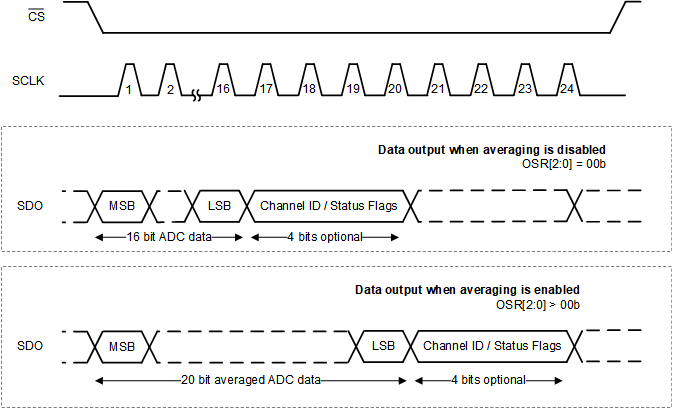SBAS928C February 2020 – September 2023 ADS7066
PRODUCTION DATA
- 1
- 1 Features
- 2 Applications
- 3 Description
- 4 Revision History
- 5 Pin Configuration and Functions
- 6 Specifications
-
7 Detailed Description
- 7.1 Overview
- 7.2 Functional Block Diagram
- 7.3 Feature Description
- 7.4 Device Functional Modes
- 7.5 ADS7066 Registers
- 8 Application and Implementation
- 9 Device and Documentation Support
- 10Mechanical, Packaging, and Orderable Information
Package Options
Mechanical Data (Package|Pins)
Thermal pad, mechanical data (Package|Pins)
- RTE|16
Orderable Information
7.3.9 Output Data Format
Figure 7-4 illustrates that the output data payload consists of a combination of the conversion result, data bits from averaging filters, status flags, and channel ID. The conversion result is MSB aligned. If averaging is enabled, the output data from the ADC are 20 bits long, otherwise the data are 16 bits long. Optionally, the 4-bit channel ID or status flags can be appended at the end of the output data by configuring the APPEND_STATUS[1:0] fields.
 Figure 7-4 SPI Frames for Reading Data
Figure 7-4 SPI Frames for Reading Data